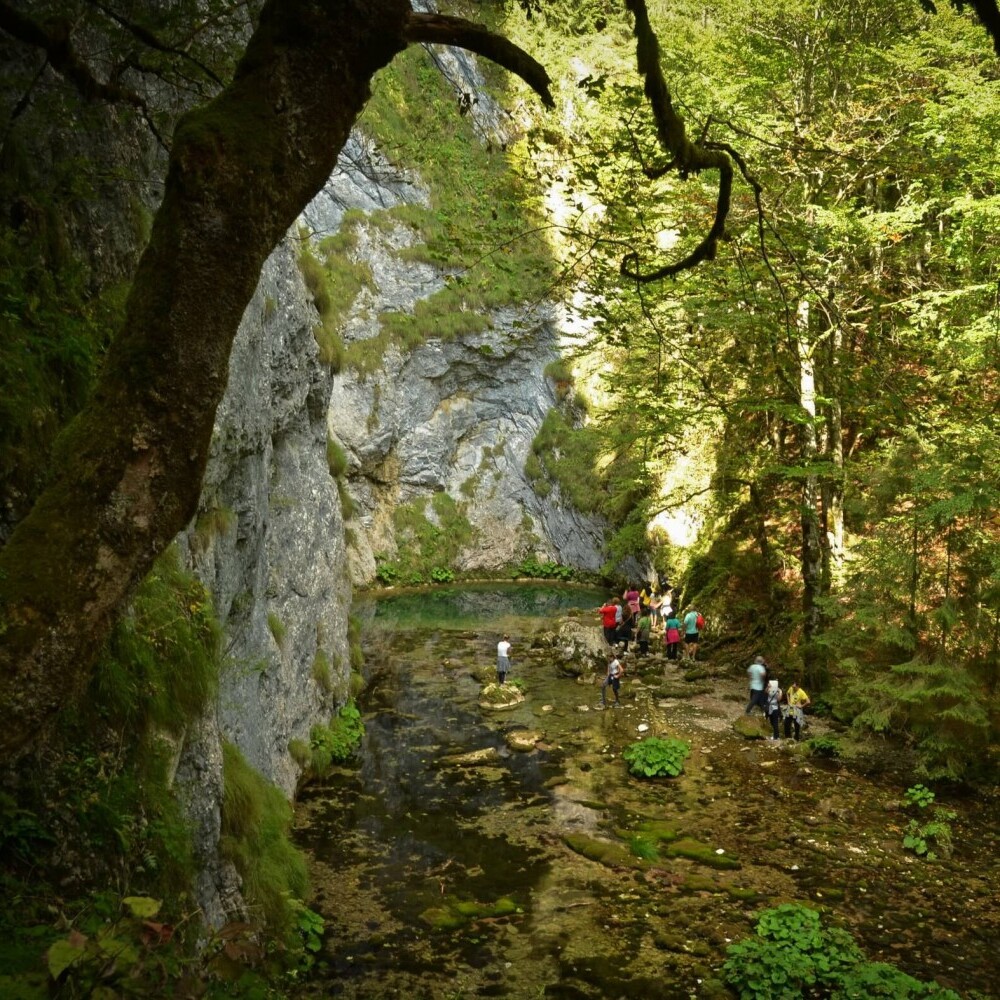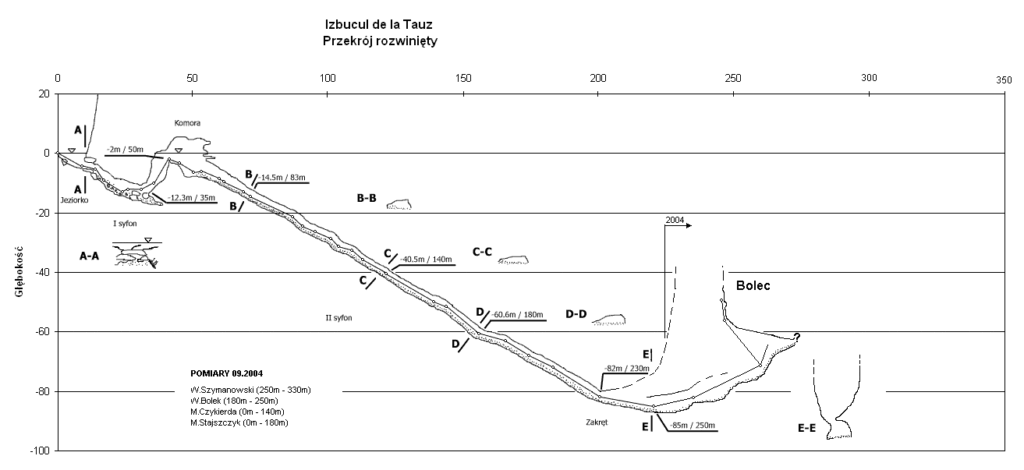How Rafael Garski Met His Fate in the Depths of Izbucul Tauz Cave


| Incident Location | Diver Full Name |
|---|---|
| Romania, Apuseni Mountains, Izbucul Tauz Cave | Rafael Garski |
Romania is the 12th largest country in Europe. It has a beautiful mix of valleys, mountains, hills, and plains. Romania is also one of the most forested countries in Europe, with about 27% of its land covered in forests.
Romania’s Natural Wonders
Apart from its forests, Romania is home to other natural wonders such as caves—both dry and underwater. One such cave, aptly named “the cave with bones,” holds the oldest known human remains in Europe, dated to be around 40,000 years old. Another captivating cave system, Izbucul Tauz, is less historically significant but draws explorers from across Europe due to its crystal-clear waters and striking rock formations.
The Beauty of Izbucul Tauz

Located west of Transylvania in the Apuseni Mountains, the entrance to Izbucul Tauz appears as a small, emerald-green pool surrounded by high, moss-covered cliffs. The area is most beautiful in fall when the leaves change color. The cave is even more beautiful underwater. The water is a bright blue, but it’s very cold (4-6°C). To dive here, you need special gear, including a thick suit to stay warm. Cave divers exploring Izbucul Tauz also need a diving computer to track their depth and gas.
The Discovery and Exploration of Izbucul Tauz
A Hungarian diver started exploring the cave system in 1982. He found a big, dry air pocket and then swam through another underwater passage to a depth of 47 meters.
Today, the known depth of Izbucul Tauz is about 344 feet (105 meters). However, in the early 2000s, cave divers raced to set new depth records. In 2001, a group of Polish divers reached 260 feet (79 meters), but in 2002, another Polish diver aimed to surpass that.
Rafael Garski’s Tragic Dive
The Preparation
Rafael Garski was a 30-year-old experienced cave diver. On October 4, 2002, he went on a solo dive in Izbucul Tauz. He wanted to break the previous depth record during a two-hour solo expedition. His support team was waiting on the surface.
Rafael, planning to dive to a depth exceeding 260 feet, carried several diving tanks with different gas mixtures. In total, he had five tanks: two filled with surface air, two with trimix (a mixture of oxygen, nitrogen, and helium), and one with argon. The argon-filled tank was crucial for maintaining proper insulation in his diving suit, protecting him from the icy waters during the deep dive.
The Dive and Rescue Attempts
Rafael signaled his support team and began his descent into the cave at 2:45 pm. He was expected to resurface by 4:45 pm. When he didn’t return by that time, the team remained patient, knowing that dives could sometimes run longer. However, by 5:45 pm, it became clear that something had gone wrong.
The Polish Alpine Association was contacted, but it would take two days for them to reach Romania. Meanwhile, the dive club members decided to attempt a rescue themselves, hoping that Rafael had found refuge in one of the cave’s air pockets. On the following day, a diver entered the cave and descended to 150 feet (45 meters), where Rafael was expected to stash his two surface air tanks. Strangely, the tanks were nowhere to be found.
The Recovery of Rafael’s Body
A second diver entered the cave the next day and descended to 256 feet (78 meters). Tragically, Rafael’s body was discovered lying on the floor of the cave, among the sedimentary rock. There were no signs that he had panicked or tried to rush to safety. His surroundings were eerily still, with no disturbed silt, indicating a calm but fatal end.
Attempts to recover Rafael’s body began on October 7 when the Polish Alpine Association arrived. Unfortunately, the first attempt failed. It wasn’t until October 9, after three long days, that two divers managed to inflate Rafael’s buoyancy device using compressed air and finally brought his body to the surface.
Following the discovery of Rafael Garski’s body, a detailed investigation was conducted to understand the sequence of events that led to his tragic death. It was determined that a combination of factors, creating a perfect storm, caused his untimely demise.
The Descent: Carrying Extra Weight
Following his descent into the Izbucul Tauz cave system, Rafael carried all five of his diving tanks, including two filled with surface air and two with trimix. Typically, the surface air tanks would be ditched at a certain depth and retrieved later during decompression stops. However, it seems Rafael chose to keep the surface air tanks with him during his descent, possibly to conserve energy.

While this extra weight aided his descent, it also created additional complications as the dive progressed.
Equipment Malfunctions and Buoyancy Issues
At the deeper sections of the cave, Rafael switched to his trimix tanks—a necessary change due to the increased pressure and depth. His buoyancy vest, connected to the trimix tanks, was meant to help him ascend by inflating with gas. However, a leak was discovered in this apparatus during the investigation, likely preventing Rafael from being able to inflate it properly. This malfunction would have made it difficult for him to surface, forcing him to rely more on his trimix supply, which was rapidly depleting due to his increased respiration rate.
With his buoyancy compromised and excess weight from the additional tanks dragging him down, Rafael was caught in a precarious situation deep in the cave.
The Critical Role of the Argon Tank
One of the most significant factors contributing to Rafael’s death was the failure of his argon tank, which played a vital role in maintaining the integrity of his dry suit. Unlike a wetsuit, a dry suit keeps a diver’s body insulated from the cold water by trapping a layer of gas inside the suit. In Rafael’s case, argon was used due to its superior thermal insulation properties.
When investigators examined his equipment, they found that the argon tank was completely empty due to a leak. This failure had two catastrophic effects:
- Hypothermia: As the argon supply ran out, Rafael’s ability to stay warm was severely compromised. The cold water, with temperatures around 39 to 43 degrees Fahrenheit (4 to 6 degrees Celsius), likely caused hypothermia to set in quickly. This would have led to uncontrollable shivering, confusion, and a loss of motor skills, further inhibiting his ability to respond to the situation.
- Suit Compression: As Rafael descended deeper into the cave, the pressure increased, compressing the gas inside his dry suit. Without the ability to add more gas from the argon tank, the suit would have tightened around his body, restricting his movement and causing intense pain, a phenomenon known as a suit squeeze. His limbs likely became immobile, rendering him helpless in the water.
The Agonizing End
Despite his dire situation, Rafael managed to switch back to his surface air tanks. However, at the extreme depth he was in, he would have experienced severe narcosis, a condition caused by breathing gases at high pressure, which induces confusion and disorientation.
Before losing consciousness, Rafael probably endured excruciating pain, fear, and disorientation. The official determination was that his death was an unfortunate accident caused by hydrocution.
Lessons from Rafael’s Dive
The tragic loss of Rafael Garski serves as a stark reminder of the extreme risks involved in cave diving, particularly in cold, unforgiving environments like Izbucul Tauz. A series of equipment failures, including a faulty suit and depleted tanks, contributed to this devastating outcome. Rafael’s story highlights the need for meticulous planning, reliable gear, and a constant awareness of the unpredictable forces of nature, even for the most experienced divers.
